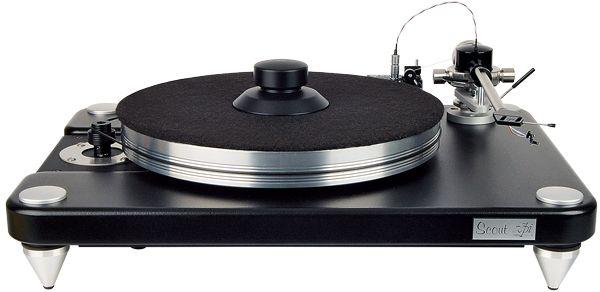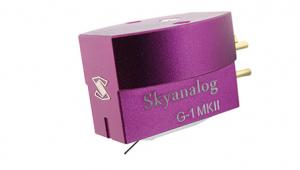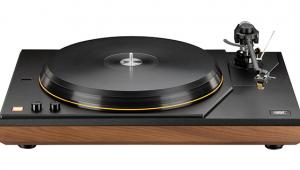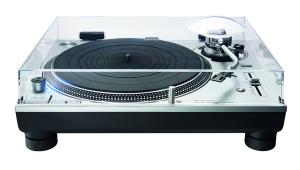Vpi Scout 1.1 Belt Driven Turntable With Manual Speed Control (£1975 Inc Arm)

The Scout 1.1 offers more refinement for your money, and is the cheapest VPI turntable to use a freestanding motor unit housed in its own steel case, which tucks into a dedicated cutout in the plinth.
Compared to the original Scout, the 1.1 brings in a number of changes. The former white frosted acrylic platter is replaced with a 1.38in-thick 6061 grade alloy platter, which VPI says can be machined to tighter tolerances. Thanks to a solid steel plate bonded to its underside, the platter now tips the scales at 5.8kg. VPI has also upgraded the Scout’s main bearing.
The Scout’s 30mm MDF plinth is carried over from the old model, sporting the same steel plate bracing its underside, and comes finished in a black-only paint job. Also carried over are the threaded conical feet, although these are now rubber tipped. Finally, the Scout’s AC synchronous Hurst motor system has also been tweaked for UK-bound models, with low resonance power supply components specifically selected for a 50Hz mains frequency.
Completing the package is the latest 9in version of VPI’s JMW Scout stainless/alloy unipivot tonearm, now with an anodised black and polished silver two-tone finish. The arm essentially comes in two sections, comprising the armboard and lower ‘bearing’ assembly that’s fixed to the plinth, and the upper housing and arm wand. Being a unipivot, the bearing is actually a fiendishly sharp tungsten-carbide point upon which the upper section, with its machined cup, is balanced.
The JMW arm still partially depends on VPI’s trademark anti-skate method, relying on tension in the exposed twisted arm wires that loop from the arm to the RCA junction box. To this, VPI has now added a traditional nylon thread and weight to provide added force.
A subtle approach
With Benz Micro ACE high output MC cartridge [HFN Sept ’11] fitted, we found the VPI to be a very warm-hearted musical performer. Stephen Fretwell’s ‘Bumper Cars’ track from his Man On The Roof LP [Fiction Records] had plenty of romance and warmth in the midrange, which sounded rich without being overly pronounced – although it was a tad more forward than the most neutral vinyl spinners in this price range.
Because of this, Fretwell’s restrained and melancholic vocals had real clarity, while strings gently emanated from the back of the soundstage to envelop the music, without sounding forced in any way.
The Scout 1.1 is subtle in its approach to extracting the music from an LP’s grooves, and while the treble is not ultimately as revealing or focused as with some, what you do hear is very organically presented. The higher notes of Fretwell’s plucked acoustic guitar strings, for example, caught our attention every time as they escaped the tweeters with a natural twang before disappearing back into the mix.
The bass guitar in Morrissey’s ‘I’m Not Sorry’ [Attack Records] can often result in muddied bass that degenerates into boom. Thankfully the Scout casts aside the shortcomings presumed of unipivot tonearm designs by confronting the track’s bottom-end head-on and determinedly keeping everything in check. The resulting bass notes were convincingly low while sounding taut and free of unnatural overhang, adding to the track’s sense of power and pace.
And while the VPI’s imaging isn’t pinpoint sharp, the soundstage it sets out is expansive and open with instruments sounding full-bodied.
Verdict
The original Scout was something of a game-changer for those wanting a more user-friendly approach to high-end vinyl replay, and this new model promises even greater long-term enjoyment. The improved platter, PSU and superbly engineered tonearm make it excellent value.
Originally published in the 2014 Yearbook


















































